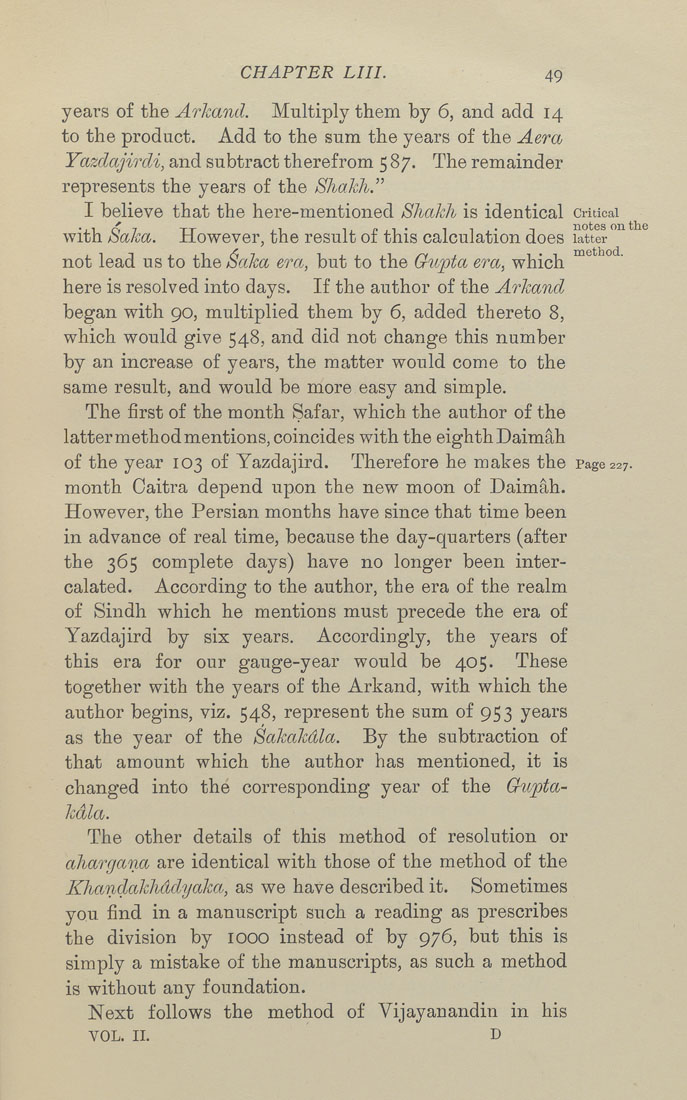CHAPTER LIII. 49
years of the Arkand. Multiply them by 6, and add 14
to the product. Add to the sum the years of the Aera
Yazdajirdi, and subtract therefrom 5 87. The remainder
represents the years of the Shakh."
I believe that the here-mentioned Shctkh is identical Critical
with Saka. However, the result of this calculation does latter
not lead us to the Sctka era,, but to the Gupta era, which
here is resolved into days. If the author of the Arkand
began with 90, multiplied them by 6, added thereto 8,
which would give 548, and did not change this number
by an increase of years, the matter would come to the
same result, and would be more easy and simple.
The first of the month Safar, which the author of the
latter method mentions, coincides with the eighth Daimah
of the year 103 of Yazdajird. Therefore he makes the Page 227.
month Caitra depend upon the new moon of Daimah.
However, the Persian months have since that time been
in advance of real time, because the day-quarters (after
the 365 complete days) have no longer been inter¬
calated. According to the author, the era of the realm
of Sindh which he mentions must precede the era of
Yazdajird by six years. Accordingly, the years of
this era for our gauge-year would be 405. These
together with the years of the Arkand, with which the
author begins, viz. 548, represent the sum of 953 years
as the year of the Sctkctkdla. By the subtraction of
that amount which the author has mentioned, it is
changed into the corresponding year of the Gupta-
kdla.
The other details of this method of resolution or
aharganct are identical with those of the method of the
Khandctkhddyakct, as we have described it. Sometimes
you find in a manuscript such a reading as prescribes
the division by lOOO instead of by 976, but this is
simply a mistake of the manuscripts, as such a method
is without any foundation.
Next follows the method of Vijayanandin in his
VOL. II. D
|








